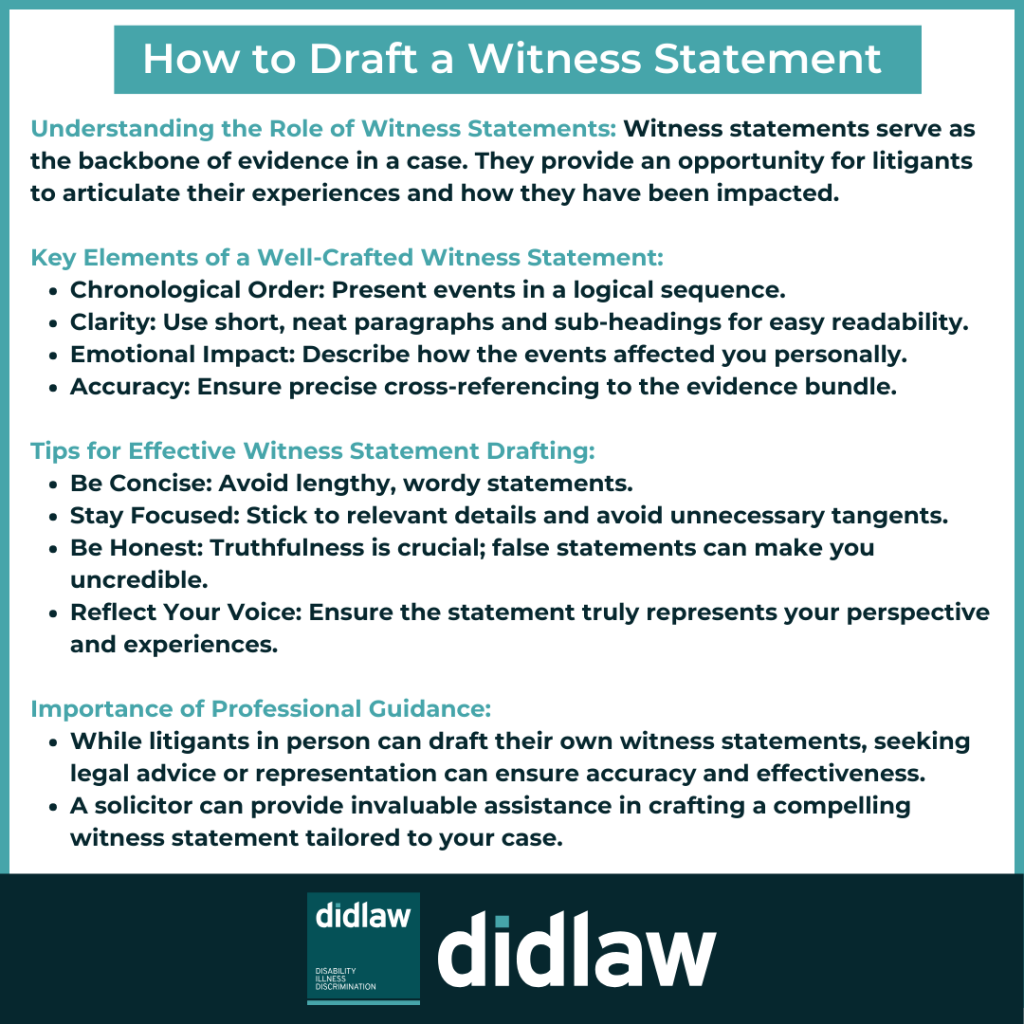
As a litigant in person the entire employment tribunal process can be daunting and overwhelming. The legal jargon, the hearings, the deadlines, need I go on. You can be bamboozled by disclosure, documents flying around everywhere and not really knowing what you should be doing, what documents you should be receiving and what a tribunal bundle even looks like.
The disclosure documents and bundle are the mainstay of the case, the backbone if you like of the evidence that the parties will rely upon to either prove or disprove the claims as presented. A well formulated bundle is the lynchpin of a good claim and it is usually the Respondent who takes responsibility for its creation (on the basis the employer/ex-employer has greater financial resources).
So, this burden is often removed from the Claimant but no-one can avoid the importance of drafting a witness statement that is thorough and well thought out. This is your case and these are your words and your witness statement is your opportunity for you to articulate what has happened, and, if necessary, how the treatment complained of has impacted you.
Usually, witness statements are now taken ‘as read’ so there is no need to read it out in front of the Tribunal. As didlaw specialises in discrimination, our cases usually involve trauma and the avoidance of reading the statement aloud can reduce impact on the Claimant in the witness box. That being said the statement remains important and needs to be logical, chronological, digestible and, in a nutshell, human.
Over my years in my practice, I have seen witness statements that reflect theses, dissertations and that ricochet from incident to incident to incident. This is not the way and will curry little favour with the Tribunal. What you want, what you really really want (see what I did there) is a statement that is a clear and unequivocal snapshot of the chronology that forms the basis of your claims. What happened, when, and who was involved. How did it make you feel, what was the impact on you, how are you now and, if relevant, have you been able to move on? Short, neat paragraphs with sub-headings and accurate cross-referencing to the bundle will make life under cross-examination a lot less stressful.
As a litigant in person (and even as a Claimant who is represented) no-one is expecting you to be a lawyer. The witness statement is your account, your opportunity to be heard and present the facts of your case in the best way possible. A statement that is too long, too verbose, too self-absorbed is going to lose the Tribunal and will serve little purpose. Be concise, be factual and most of all, be honest. At the outset of giving evidence you are asked to swear or affirm that the contents of the statement are true to the best of your knowledge and belief. Make sure this is the case. A witness statement that does not reflect the voice of the Claimant is obvious and you’ll come unstuck. I’ll never forget being in Tribunal when the other sides’ witness was asked to confirm if they had written their own witness statement to which they responded, ‘my lawyer wrote it.’ You can just imagine.
This blog was written by Elizabeth McGlone, Partner at didlaw
